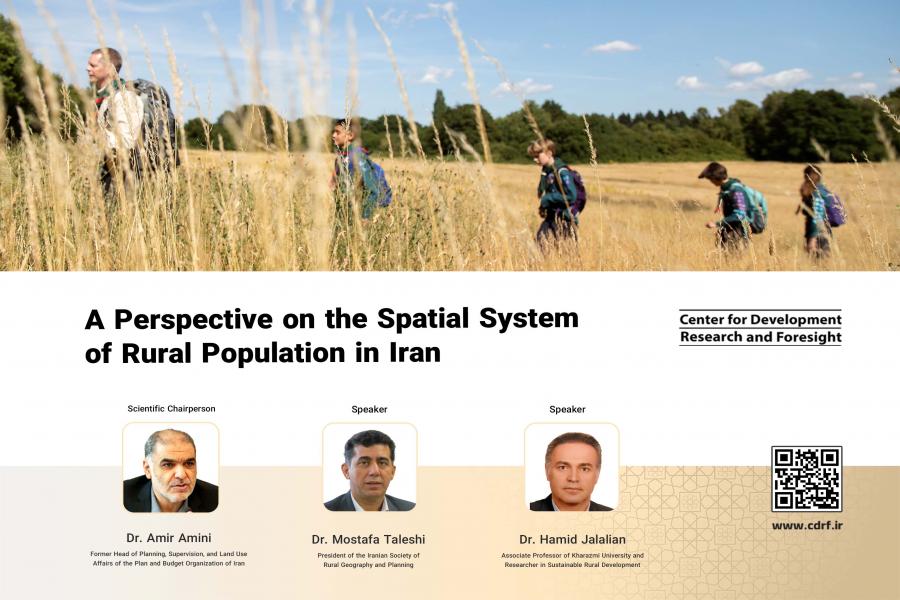
-
بررسی آییننامهها و دستورالعملهای برنامه هفتم پیشرفت
-
بررسی عوامل موثر بر افزایش تصادفات و تلفات جادهای و سوانح رانندگی و دادهکاوی تلفات انسانی
-
سازماندهی و بازآرایی فضایی آموزش عالی کشور
-
به روز رسانی سند ملی آمایش سرزمین
-
انجام مطالعات مناطق آزاد به عنوان نواحی پیشران اقتصادی کشور
-
اصلاح ساختار بودجه و پیاده سازی نظام یکپارچه مدیریت اطلاعات مالی دولت (IFMIS)

Given the significance of the subject and the rural microsystem's role in shaping Iran's broader land area macro-ecosystem, an initial assessment of rural areas based on selected macro-social, economic, physical, and institutional indicators reveals that this microsystem faces obstacles in fulfilling its intended role in the national development landscape. These challenges have negatively impacted the rural system's vitality due to their cascading effects.
An analysis of the rural system's transformation process over the past four decades highlights the trend of population migration from smaller villages to larger ones, the conversion of villages into cities, and the concentration of urban population. Statistical indicators underscore this urbanization trend as shown below:
- 30% of the urban population resides in cities with less than 100,000 inhabitants.
- 5% of the urban population resides in cities between 100,000 and 500,000 inhabitants.
- 15% of the population live in provincial metropolises ranging from 500,000 to one million inhabitants.
- 50% reside in metropolises with more than one million inhabitants.
These figures suggest an imbalance in the settlement hierarchy. Additionally, the average annual rate of village-to-city conversion from 1990 to 2006 was 127 cities, indicating that roughly every 15 days, a rural settlement transformed into a small urban space. This urbanization process, characterized by population transfer and concentration around provincial and national metropolises, along with phenomena such as annexation, merger, marginalization, and informal settlement, are defining features of Iran's residential system.
To enhance spatial development, the following recommendations, drawn from the insights of the scientific director and speakers of the scientific conference of the Center for Development Research and Foresight, are deemed essential:
- Enforce the Land Use Document: Establish the Land Use Document as a legally binding framework for achieving effective spatial planning.
- Adopt an Integrated Rural-Urban Approach: Integrate rural-urban perspectives into policymaking to promote sustainable residential system population growth.
- Review and Audit Related Laws and Regulations: Evaluate and revise related laws and regulations to ensure appropriate management at the device level and establish effective institutions within the rural residential management system.
- Reassess Integrated Management: Reconsider the application of integrated management through unit management mechanisms and strengthen local governance in the spatial structure of the residential system in land areas.
- Refine Policymaking and Goal Setting: Reconsider the goals, missions, and strategies for applying integrated spatial management within the policymaking system, particularly in the country's five-year development plans.
- Design a Comprehensive Participatory System: Plan and implement a conscious, comprehensive, and sustainable participatory system through active engagement in effective economic activities in rural settlements.
- Diversify the Rural Economy: Diversify the rural economy and create innovative job opportunities to enhance rural livelihoods.
- Reinvigorate Local Governance Institutions: Reinvigorate the roles of local governance institutions, such as Islamic rural councils, village heads, and other effective formations, in the implementation of rural governance in rural settlements.



